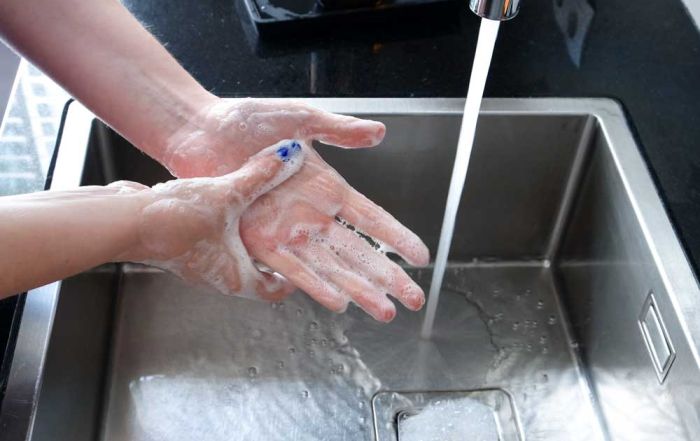Was that last 24 Hour “Bug” You Had Really a Foodborne Illness in Disguise?
Within this blog, I have discussed many foodborne pathogens: E. coli, Hepatitis, Salmonella, Listeria monocytogenes, and Campylobacter. But we’ve somehow managed to omit Staphylococcus aureus (S. aureus).
It isn’t that it is any less important than the others we have discussed. S. aureus causes a wide variety of infections, from skin infections to diseases that can be potentially fatal. And while it isn’t among the top foodborne illnesses in the United States, estimates indicate that S. aureus causes just less than 250,000 illnesses in the United States each year. It should be noted through, that these incidences may be much higher than estimated due to non-reports of the illness.
S. aureus can grow in a wide range of temperatures, from 44°F to 119°F and while most pathogens thrive in moist environments, S. aureus has the ability to survive dry and otherwise stressful instruments, such as the human nose and skin, and even on clothing and other surfaces.
The formation of these toxins is one reason why cooking the food will be of no use in protecting yourself or your guests.
Symptoms of S. aureus include nausea, vomiting, stomach cramps, and in most cases, diarrhea. Symptoms can begin as little as 30 minutes after consuming a food or beverage item contaminated with S. aureus but can sometimes take as long as 8 hours to manifest in symptoms. These symptoms usually last for no longer than 24 hours and rarely result in severe illness.
Does this sound like the last “24-hour” bug you or your children may have had? This is one of the reasons why it is believed that the incidence of S. aureus is much higher than estimated, most simply do not visit a medical professional who can diagnose S. aureus.
The reason why S. aureus can make someone ill so quickly is because of the nature of the bacteria. In the case of an S. aureus illness, the bacteria may have multiplied on the food since the time the food came into contact with the host food item. These bacteria then leave behind a toxin on the food, which is what causes the illness. For example, think of a food that might have a cleaning chemical on it – it would make you sick very quickly after ingesting the item.
The formation of these toxins is one reason why cooking the food will be of no use in protecting yourself or your guests. Yes, cooking the product will eliminate the S. aureus bacteria, but it does not eliminate the toxin that the bacteria left behind.
Food items commonly implicated in S. aureus illnesses include milk and cheeses, but other food products that have been implicated in such illnesses include cold salads, sliced deli meats, sandwiches, cream-filled pastries, and puddings.
S. aureus is just one of the reasons why it is important to pay attention to safe food handling throughout the entire life of a product. Avoiding cross contamination, ensuring proper personal hygiene (unlike the sushi chef picture we used for the blogs – did you notice they were not wearing gloves?), and storing food at proper temperatures are key steps in protecting your operation from a S. aureus outbreak (and almost all other foodborne illnesses). Risk Nothing.
READ MORE POSTS
30 Years Later: The Foodborne Illness Outbreak that Changed Food Safety
In January, we hit a major anniversary. One I am betting snuck by many of you – including me! January marked 30 years since the deadly 1993 E. coli O157:H7 outbreak at Jack in the Box restaurants on the west coast. The anniversary wasn’t on any of the major news networks that I recall. It did make it into a few newspapers, at least one or two of the newspapers that are left. It wasn’t until late-February that I realized it.
Does Temperature Really Matter when Washing your Hands?
In January, I reviewed the changes to the 2022 Food Code in my blog (check out Part I and Part II), and one change to the food code that I had mentioned, but didn’t discuss in-depth, was the change that lowered the water temperature a hand sink was required to produce to 85°F, as noted in Section 2-202.12 of the code. This requirement has been in place since the publishing of the 2001 Food Code, which required a water temperature of 100°F. Prior to this, 110°F was required (see the 1999 Food Code). So why the change and does water temperature when washing your hands really matter?
Hand sinks: Often Taken for Granted, but an Essential Part to Effective Hand Hygiene
Late in January, I received a question about hand sinks in a foodservice operation. The question pertained to school staff (teachers and aides) who were using a hand washing sink in the school kitchen. The question came as a matter of who was allowed access to the kitchen to use the sink, but the question itself caused me to go down a rabbit hole of requirements for hand washing sinks in foodservice operations.
Hot off the Press: The 2022 Model Food Code has been Released! Part Two.
Earlier in the month, we started a discussion about the changes to the 2022 Food Code. If you missed that post, late in December 2022, the Food and Drug Administration released the 2022 Food Code and I wanted to highlight a few of the changes that have been made to the code.










